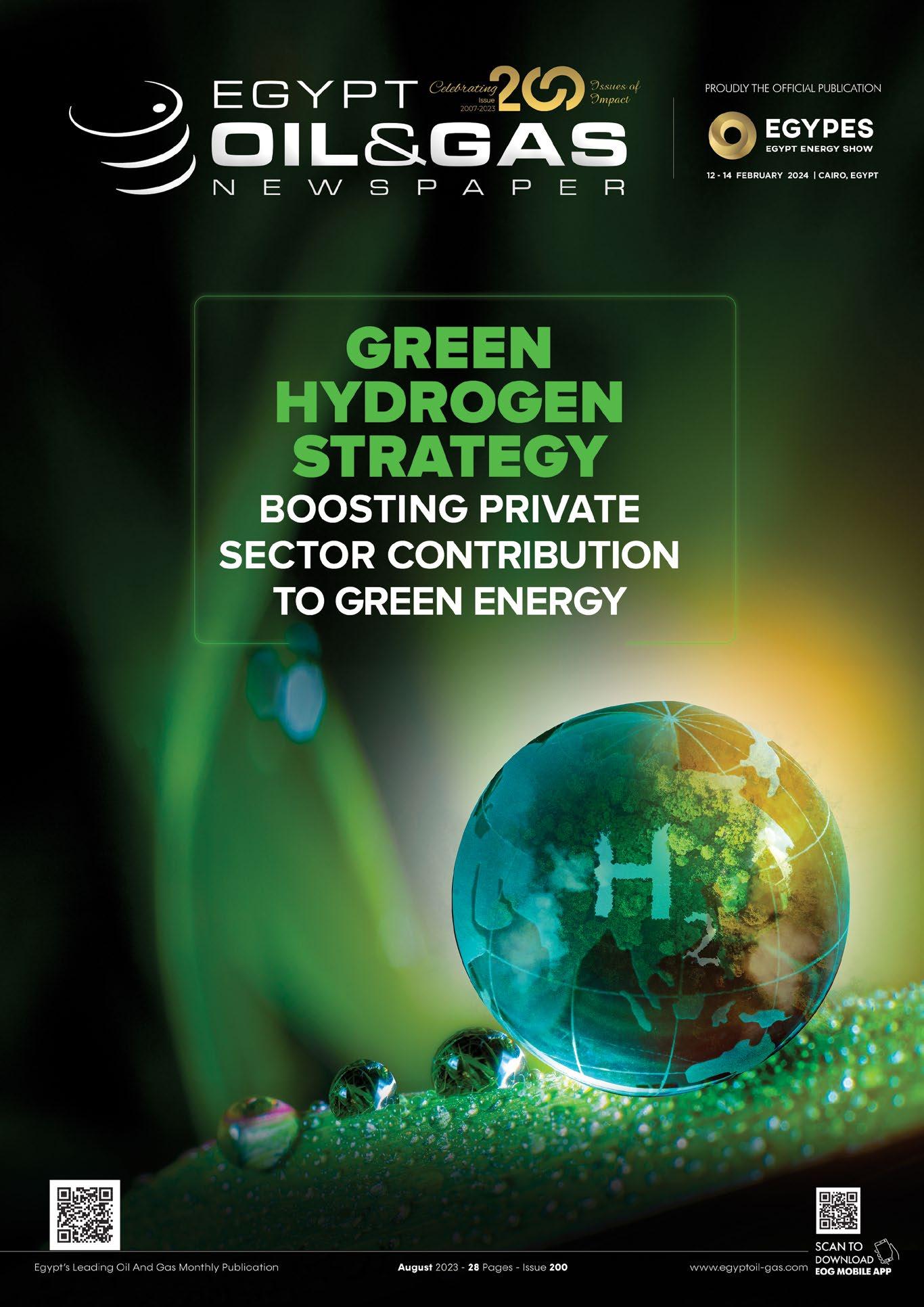

EDITOR’S LETTER
Dear Reader,
With July widely considered the hottest month on record, climate change has offered humanity a bitter reminder of its presence this summer with extreme temperatures causing difficult challenges on a global scale. Hydrogen has become a fundamental source of both energy and hope as the industry pushes to drive growth while remaining committed to its decarbonization objectives.
We have chosen to tackle hydrogen as the theme for August’s issue not only because it is a rich and promising source of renewable energy, but also since it is a fundamental part of the diverse energy mix that will guarantee the continued growth of the global energy industry and the prosperity of humanity at large.
The Overview and Industry Insight sections tackle local efforts on the ground and trends in the green hydrogen industry in Egypt, a field that will strengthen the country’s ability to decarbonize and attract investments to its economy. The Energy Economics section discusses the economic feasibility of green hydrogen on a global scale, while our Technology section offers an insightful perspective on the use of plasma technology to enhance the sustainability of hydrogen production.
The main message of this issue is that the energy transition is not just about energy. It is about synergy. The synergy of all types of energy within the planet’s diverse energy mix is what will create a better tomorrow for all of us.
Wishing our loyal audience a good read!
CONTENTS
Green Hydrogen Strategy: Boosting Private Sector Contribution to Green Energy

General Manager
Ayman Rady
Research & Analysis Manager
Dr. Mahinaz El Baz
Managing Editor
Ihab Shaarawy
Senior Editors
Rana Al Kady
Nader Ramadan
Senior Writer
Sarah Samir
Staff Writer
Fatma Ahmed
Research & Analysis Supervisor
Reham Gamal
Research Analysts
Jolly Monsef
Mariam Ahmed
Maha Balbaa
Statistician
Nada Abbas
Chief Reporter
Wael El-Serag
Business Development Manager
Tamara Ewiss
Marketing Specialist
Shrouk Ihab
Creative Art Director
Omar Ghazal
Senior Graphic Designer
Merna William
Motion Designers/ Video Editors
Amira Hassan
Aya Aly
3D Visualizer
Tamer Gamal
Photographer
Hady Nabil
CEO Executive Assistant
Noha Zayed
Web Master
Olfat Kamel
Web Developer
Mohamed Elwakeel
Administration
Taghreed Mounir
Senior Accountant
Mahmoud Khalil
Accountant
Mohamed Nagy
Distribution Officers
Mahsoub Kenzi
Mohamed El-Sayed
Mahmoud Nabil
Osama Mohamed
Hesham Mohamed Publisher
Mohamed Fouad
All
UNDER THE HIGH PATRONAGE OF H.E. TAREK EL MOLLA
MINISTER OF PETROLEUM & MINERAL RESOURCES - ARAB REPUBLIC OF EGYPT

EOGC
5-7 November, 2023
SUPPORTING ORGANIZATION
ORGANIZED BY
TECHNICALLY PREPARED BY
OFFICIAL RESEARCH PARTNER
PLATINUM SPONSORS
GOLD SPONSORS
ESG PARTNER
ROUNDTABLE SPONSOR
OPERATIONAL EXCELLENCE AWARDS SPONSOR
SILVER SPONSOR
TECHNICAL WORKSHOP SPONSOR

COCKTAIL RECEPTION SPONSOR
LUNCH SPONSOR
STRATEGIC PANELS SPONSOR
DELEGATE BAG & NAME TAG SPONSOR
EGYPT TO DRILL 35 NEW NATURAL GAS EXPLORATION WELLS OVER 2 YEARS WITH $1.8B IN INVESTMENTS: EL MOLLA
Minister of Petroleum and Mineral Resources, Tarek El Molla confirmed that Egypt has begun implementing an ambitious program in cooperation with Eni, Chevron, ExxonMobil, Shell, and bp to drill 35 new exploration wells for natural gas in the Mediterranean Sea and the Nile Delta within two years from 2023 until July 2025.
The new wells will be drilled with a total of investments amounting to $1.8 billion. 21 wells will be drilled during the current fiscal year 2023/24 and 14 wells during the fiscal year 2024/25, El Molla told Emirati news agency WAM on the sidelines of the Organization of the
Petroleum Exporting Countries (OPEC)+ meetings in Vienna.
During the past five years, the Egyptian oil sector and international companies drilled a large number of exploratory wells, amounting to 576 wells. As a result, 284 new discoveries of oil and gas were made, 217 for oil and 67 for gas. These discoveries added reserves amounting to 1320 million barrels of oil equivalent (mboe), 295 million barrels of crude oil and condensates, and 5750 billion cubic feet (bcf) of gas. These discoveries come in light of plans to put them on the production map, El Molla noted.
EGYPT ATTRACTS $9B IN REFINING, PETROCHEMICAL INVESTMENTS IN 7 YEARS
The Ministry of Petroleum and Mineral Resources (MOPMR) launched an ambitious strategy starting in 2016 to develop the performance of the petroleum refining industry and increase production capacities of petroleum and petrochemical products.
The ministry’s strategy took into account the addition of new entities, energies and capabilities, which resulted in the operation of eight projects in the field of oil refining and manufacturing, as well as refinery expansions, at a total investment cost of more than $5 billion.
Based on the success achieved, the country implemented and is accelerating new refining projects with investments of
about $7.5 billion, and their operation will be completed successively.
The most important of these projects are the expansion project of the Midor refinery in Alexandria. Its first and second phases have been completed and started operating experimentally.
The important projects also include the diesel production complex at ANOPC in Assiut and the expansions of the Suez Oil Processing Company (SOPC), represented by the coking and diesel production complex. This is in addition to the condensate distillation project at the Nasr Petroleum Company in Suez; and the air distillation project at the Assiut oil refinery.
EL MOLLA REVEALS ANNUAL PLAN WITH $8B OIL, GAS INVESTMENTS
Minister of Petroleum and Mineral Resources Tarek El Molla revealed an annual plan that includes investments worth $8 billion in the oil and gas sector during the current fiscal year for research, exploration, development, and operating expenses.
He emphasized the country’s success in obtaining the support of international companies and strategic partners.
El Molla’s comments came in a statement to Asharq Business on the sidelines of his participation in the annual OPEC+ conference in the Austrian capital, Vienna.
A BLAST FROM THE PAST
In August 2016, Egypt signed an agreement with Cyprus to discuss cooperation in constructing a submarine pipeline that would transfer Cypriot natural gas from its offshore Aphrodite field to Egypt.
Under the terms of the agreement, Egypt is allowed to use imported gas for domestic consumption or re-export after liquefaction at the two Egyptian liquefied natural gas (LNG) plants. The agreement was signed by Egypt’s Minister of Petroleum and Mineral Resources Tarek El Molla and Cyprus’s Energy Minister Georgios Lakkotrypis. The field is estimated to have up to 4.5 trillion cubic feet (tcf) of natural gas.
El Molla commented on the agreement saying that it will help in covering the country’s demand as well as support explorations in the Aphrodite field. In 2018, the minister announced that the project costs from $800 million to $1 billion. Cyprus expected that the initial natural gas production from the Aphrodite field will begin between 2024 and 2025. In addition, El Molla stated that he expects the pipeline will be operational by 2025. It is also worth noting that NewMed Energy, which owns a 30% stake in the field, recently submitted a plan to the Cypriot government for the field’s development. Chevron (the field’s operator) and Shell each own a 35% stake.
An ambitious plan has been drawn up for drilling work to explore natural gas in Egypt, most of which will be offshore. The plan will include the East Mediterranean in the Egyptian territorial waters, along with the Nile Delta in the Mediterranean, and the economic zones in the western Mediterranean, with 35 large exploration wells, with investments amounting to $1.8 billion within two years.
Meanwhile, El Molla referred to several joint projects in the field of renewable energy, as Egypt works to make renewable energy reach 42% of its energy mix by 2030. Contracts have been signed with major Saudi and Emirati companies to add more than 20 gigawatts of wind and solar energy.
PETROLEUM SECTOR RECEIVES FIRST EGYPTIAN-MADE OIL RIG
Minister of Petroleum and Mineral Resources Tarek El Molla, accompanied by the Governor of Suez Abdel Majid Saqr and leaders of the petroleum sector, witnessed the delivery of the first Egyptian-made oil rig.
The minister stated that the expansion of local manufacturing activities for oil and gas industry components provides an economic return and job opportunities.
El Molla noted that the completion of the first Egyptian-made drilling rig, with investments amounting to $6.5 million, is a model of fruitful economic cooperation between Egypt and China. He added that it also a successful model for developing cooperation to transfer manufacturing technology from China to Egypt as an alternative to importing. Most of the parts for the new excavator were manufactured locally by Egyptian hands, and some of them were provided from abroad.
PETROJET, SLB COOPERATE IN IMPLEMENTING EARLY PRODUCTION FACILITIES OF MELEIHA FIELD PHASE II
Petrojet and SLB signed a contractors deal to design, supply and operate an early production facilitating station at the Meleiha field.
The station is considered a part of the second phase of the Meleiha field in the Western Desert for Agiba Petroleum Company.
The second phase of the project includes designing, supplying, implementing and testing a gas pipeline which is 20 inches in diameter and 130 km in length. The project further includes designing, supplying, implementing and testing pipeline networks for 19 wells, with a length of 122 km.
NUMBER OF THE MONTH
2Oil & Gas Digital Bid Rounds in FY 2022/23

The fiscal year 2022/23 witnessed launching two bid rounds to intensify research and exploration activities for untapped oil and natural gas resources in Egypt. The first international one was launched in December 2022, by Egyptian Natural Gas Holding Company (EGAS) through the Egyptian Upstream Gateway (EUG). The aim was to search for natural gas and crude oil in 12 areas in the Mediterranean and Nile Delta, including six o shore and six onshore regions. As announced by EUG, this bid round was o cially closed on July 17.
The second bid round was launched in March 2023, by the Egyptian General Petroleum Corporation (EGPC) to be the first of its kind for the development of brownfields, through EUG. This bid round includes eight producing fields in the Gulf of Suez and the Eastern Desert. This bid round's closing date was extended twice to be set by August 9.
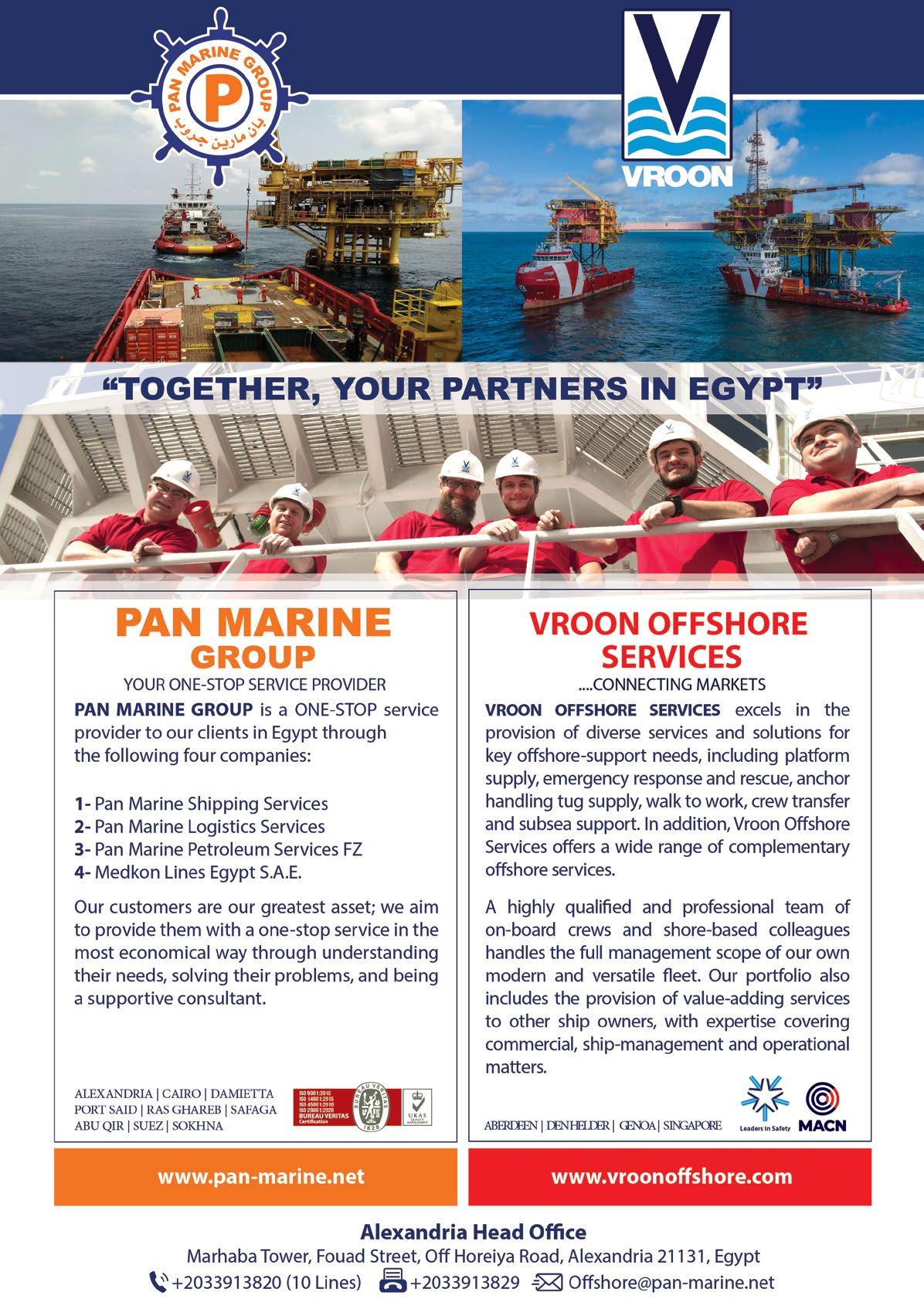
PETROLEUM DEVELOPMENT
SHELL, PARTNERS TO DEVELOP PHASE 10 IN EGYPT’S WDDM CONCESSION
Shell Egypt (BG Delta Limited) a subsidiary of Shell plc., and its partners; the Egyptian Natural Gas Holding Company (EGAS), the Egyptian General Petroleum Corporation (EGPC) and Petronas signed an agreement to commence development of the tenth phase (phase 10) in Egypt’s Nile Delta offshore West Delta Deep Marine (WDDM) concession in the Mediterranean Sea.
EMISSIONS REDUCTION PETROLEUM MINISTER PARTICIPATES IN CHAPTER ZERO EGYPT MEETING
Subject to regulatory approvals, drilling activities are expected to commence in late 2023 when the rig arrives at the location. The phase 10 development program includes the drilling of three wells. The Burullus Gas Company joint venture is the operator of the WDDM concession and the development phase 10.
EL MOLLA WITNESSES INAUGURATION OF THE RAVEN FIELD WESTERN DESERT COMPLEX NATURAL GAS CONNECTION PROJECT
Minister of Petroleum and Mineral Resources
Tarek El Molla witnessed the inauguration of the first phase linking Raven field, one of the fields north of Alexandria, which is being developed by bp, to the natural gas complex in the Western Desert, operated by the Egyptian Natural Gas Company (GASCO). El Molla stated that the expanded Egyptian role in the natural gas industry was encouraged by a clear vision based on economic reform, political stability, and success in building distinguished international and regional relations.
During the inauguration, El Molla noted that the petroleum industry, with its long history and vision, is always working to achieve the highest economic return from natural resources.
The Western Desert natural gas complex is one of the important petroleum edifices
AGREEMENTS
that serve the needs of the local market and petrochemical complexes of natural gas derivatives, the minister pointed out. This connection project came to feed the complex from the fields of the Mediterranean, in addition to the main supply of natural gas from the Western Desert’s fields. It works to enhance the security of supply and achieve full benefit from gas rich in derivatives discovered in the Mediterranean.
EGPC, EGAS, MSMEDA SIGN MOU TO SUPPORT MICRO, SMALL, MEDIUM ENTERPRISES
Minister of Petroleum and Mineral Resources
Tarek El Molla has witnessed signing of a memorandum of understanding (MoU) between the Egyptian General Petroleum Corporation (EGPC), the Micro, Small and Medium Enterprises Development Agency (MSMEDA), and the Egyptian Natural Gas Holding Company (EGAS) to support micro, small and medium enterprises.
This would happen by providing better opportunities to the owners of such projects to increase local production, providing production inputs for them, and raising the competitiveness of Egyptian exports through the expansion at the compressed natural gas (CNG) and centers for converting cars to run with dual fuels.
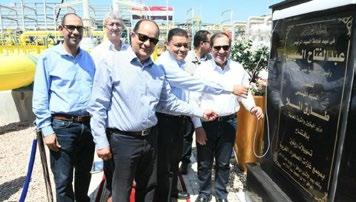
After the signature, El Molla said that this protocol represents a distinguished model for cooperation between the state’s entities.
It will provide services and the needed funds for the owners and those who desire to initiate start-ups in addition to providing technical support and training programs.
For his part, the CEO of MSMEDA, Bassel Rahmy, elaborated that this agreement comes as part of the county’s strategy for supporting environment initiatives and its economic reflection to the citizens including vehicles conversion to run on natural gas which will reduce pollution as well as reduce petroleum products imports.
On another hand, El Molla and Rahmy witnessed the signing of the contracts for the ninth phase of car conversion project between Gastec, Cargas and MSMEDA aiming to convert 8500 cars to run on natural gas for each company, at a value of EGP 100 million for each company.
EGPC, APACHE SIGN TO REGULATE KHALDA PETROLEUM WORK
Minister of Petroleum and Mineral Resources, Tarek El Molla, witnessed the signing between the Egyptian General Petroleum Corporation (EGPC) and US’ Apache of the regulation to manage the work of Khalda Petroleum Company, the Joint Venture between the two sides.
This is after the merger process that took place between Khalda and Qarun Petroleum Company as a new entity under the umbrella of Khalda, which came as a result of the project to develop and modernize the
sector to establish a new entity capable of achieving higher efficiency results and performance in the field of research, exploration, and production of oil and gas.
.El Molla stated that the signing represents a beginning of a new phase to work more efficiently through the merged entity and develop the volume of business, thus paving the way for increasing productivity and achieving tangible and more efficient results on the ground.
Minister of Petroleum and Mineral Resources Tarek El Molla participated in the meeting organized by the Egyptian NGO association Chapter Zero Egypt which was attended by Yasmine Fouad, Minister of Environment, and the Ambassador of the European Union in Cairo Christian Berger.
The meeting was held on the occasion of the start of the association’s work as the first entity that brings together the government and private sectors. Addressing the top management in many companies, it aims to raise awareness about the opportunities and challenges of climate change in cooperation with the European Bank for Reconstruction and Development (EBRD) and the Climate Governance Initiative (CGI).
In his speech, El Molla confirmed that the focus should be on reducing emissions from energy production and use in light of the commitment of the oil and gas industry to carbon neutrality. This should happen, especially since the world will continue to consume various energy sources, including oil and gas.
El Molla added that the implementation of the energy transition is a priority, but it must be according to a realistic, fair and balanced approach. He emphasized that there is no one solution that is suitable for all countries, but there are different methods according to the circumstances of each country or geographical area.
He pointed out that the fluctuations the global energy sector is experiencing require the concerted and integrated efforts and resources of the government and private sectors.
For his part, Ahmed El Sewedy, the first president of the Egyptian NGO association Chapter Zero Egypt, explained that the association is the first of its kind in Africa and the Middle East. He pointed out that it reflects Egypt’s responsibility in the green economy.
EGYPT HOLDS FIRST HYDROGEN MOU COORDINATION MEETING WITH EU
The first coordination meeting to activate the memorandum of understanding (MoU) signed between Egypt and the European Union (EU) on the strategic partnership on hydrogen projects was held at the headquarters of the Ministry of Petroleum and Mineral Resources in the Governmental District of the Administrative Capital.
The MoU was signed during COP 27, which Egypt hosted in Sharm El-Sheikh in November 2022. During the meeting, the relevant areas of cooperation that the joint working groups will work on were reviewed, which includes accelerating the deployment of renewable energy generation projects, the necessary infrastructure, the regulatory framework, studying supply and demand, taking into account environmental sustainability, and ways to provide the required financing for the implementation of these projects. The meeting further reviewed developing a plan for execution for each group by formulating a specific action plan with a timetable for the various activities and expected results. This is in addition to merging the outputs of the action plans into a master action plan that contributes to the implementation of the memorandum of understanding.
EGYPT MINING FORUM EGYPT, LIONSBRIDGE SIGN TWO MINING MOUS
On the sidelines of the Egypt Mining Forum 2023, Minister of Petroleum and Mineral Resources, Tarek El Molla witnessed the signing of two memoranda of understandings (MoUs) between Lionsbridge and both Misr Phosphate Company, the General Authority for the Economic Zone of the Golden Triangle.
The first MoU for the implementation and operation of the phosphoric acid plant project in the economic zone of the Golden Triangle. The MoU was signed by Brian Wesson, Executive Chairman of Lionsbridge; Clyde Wesson, Executive Director of Lionsbridge; and Adel Saeed, Chairman of the General Authority for the Golden Triangle Economic Zone.
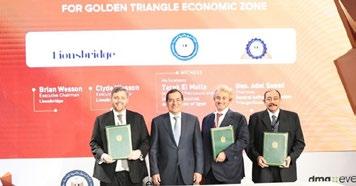
The second MoU came between the Misr Phosphate Company and the Australian Lionsbridge Company regarding the supply of phosphate ore needed for the phosphoric acid plant project in the economic zone of the Golden Triangle.
EMRA REACHES AGREEMENT WITH BARRICK GOLD, CENTAMIN ON TERMS FOR MODEL OF MINERALS EXPLOITATION AGREEMENT
Minister of Petroleum and Mineral Resources, Tarek El Molla, announced that the Ministry of Petroleum and Mineral Resources reached an agreement with Egyptian Mineral Resources Authority (EMRA), Barrick Gold Canadian Company, the English Company Centamin , on the commercial, fiscal and legal terms for Model of Minerals Exploitation Agreement (MMEA) to a number of concession blocks awarded to the two
companies in the international bid round for exploration of gold and associated minerals.
The Minister asserted that this agreement is on top of Egypt Mining Forum’s current edition achievements. The two international companies; Barrick and Centamin, have the experience, fiscal liability (solvency), and techniques to expedite the agreement implementations and achieving work results added to the Mining Sector’s developments.
EL MOLLA LAUDS SUCCESS OF EGYPT MINING FORUM 2023
Minister of Petroleum and Mineral Resources, Tarek El Molla, confirmed that the Egypt Mining Forum 2023 in its current edition witnessed momentum and turnout from international and local mining companies, and the participation of mining ministers in a number of countries.
During its two-day activities, panel discussions and specialized technical sessions were held, and everything new in the mining activity was showcased by the companies taking part in the exhibition accompanying the conference. This came during the closing fireside chat concluding the forum under the title ‘Outlining Egypt’s Vision to Develop its Mining Sector’.
The minister stated that the progress and development achieved during the past year as a result of the reforms and measures by the state to develop the mining sector and the success in achieving mutual benefit for all parties confirm that Egypt is on the right track.
El Molla explained that the reforms by the state to develop the mining sector were good, but they have become insufficient, especially in light of the challenges facing the world, due to the Corona pandemic and the Russian-Ukrainian crisis. There are still challenges facing investors, but through cooperation together, these challenges can be overcome and success can be achieved.
GOLD MINING LEADERS TALK INVESTMENTS INCENTIVES IN EGYPT MINING FORUM 2023
Minister of Petroleum and Mineral Resources, Tarek El Molla, witnessed the panel of the CEOs of major international gold mining companies working in Egypt, which was entitled ‘Unlocking the Investment Potential of Egypt's Mining Sector’, which was a part of the activities of Egypt Mining Forum 2023.
The panelists including CEOs and seniors from Akh Gold Limited, Centamin LC, Lotus Gold Corporation, and Barrick Gold Corporation, who affirmed that Egypt is on the right path, and that it has provided new advantages and incentives for investment in the mining sector, keeping pace with the global industry.
Martin Horgan, Centamin's CEO stated that Egypt has the geological capabilities and expertise to achieve distinguished results in the field of mining, in addition to the availability of qualified infrastructure including paved roads, a communications
network, electricity and adequate water. In addition, Egypt has human capabilities, which pave the way for a brilliant future in the field of mining, which encourages large and medium international companies to work in this promising environment.
Mark Campbell, Chairman & General Manager of Akh Gold highlighted Egypt's distinguished geographical location qualifies it to attract more investments and puts it in the focus of the world's attention, especially after the Ministry of Petroleum and Mineral Resources amended the Mineral Resources Law in 2019. He praised the success of Centamin Company's experience in exploiting the Sukari mine. He pointed out the importance of launching new bids for mineral wealth in encouraging investment and achieving economic progress.
EGAS COMPLETES CRISIS, DISASTER MANAGEMENT TRAINING PROGRAM
The Egyptian Natural Gas Holding Company (EGAS) has completed the second training program, which was held in cooperation with the National Defence College at Nasser Higher Military Academy, from 18 to 21 June 2023.
The training had witnessed the participation of representatives from the company and its subsidiaries and tackled disaster management. The program aimed to introduce crisis management concepts and approaches to effectively resolve crises in a timely manner. Training sought to build trainees skills’ to quickly make the right decision at the right time based on sound information.
The graduation certificates were distributed in the presence of Howayda Kamal, Assistant Vice President of EGAS for Wages and Benefits, who is acting on behalf of Randa Sabra, Assistant Vice President of EGAS for Administrative Affairs; and Hossam Anwar, the supervisor of the program from Nasser Higher Military Academy.
EGYPT TO IMPORT $250M WORTH OF MAZUT TO SECURE ELECTRICITY SUPPLY
Prime Minister Mostafa Madbouly made a televised announcement of a government decision to import additional shipments of mazut for the coming period to achieve balance in the electricity network.
He explained that the volume of mazut imports until the end of August will amount to between $250 million and $300 million.
This decision was announced after a cabinet meeting at its headquarters in New Alamein City, in the presence of Tarek El Molla, Minister of Petroleum and Mineral Resources and Mohamed Shaker, Minister of Electricity and Renewable Energy.
The statement dealt with measures to address the problem of power outages.
NEW NATURAL GAS FUELING STATION OPENS ON ALEXANDRIA-MATROUH ROAD
The first fueling station for cars with natural gas in Marsa Matrouh Governorate, El Alamein City, Gastec / Wataniya, began to provide its services on the Alexandria-Matrouh Road, El Alamein City. Currently, natural gas supply services are available in the North Coast region, which are provided by Gastec through the mobile natural gas supply station on Alexandria Matrouh Road, next to Heidi Village.
This comes within the framework of the ongoing plan of the Ministry of Petroleum and Mineral Resources to expand natural gas supply services in various regions across the Republic. This enhances the demand for the use of natural gas as fuel for cars, in addition to providing economical and inexpensive solutions to save fuel for car users, in light of the fact that the price of a cubic meter of compressed natural gas for cars (equivalent to a liter) is less than the price of 92-octane gasoline by an estimated 56%.
ADNOC

ADNOC MAKES $11B OFFER TO TAKEOVER COVESTRO
ADNOC has offered a proposal of almost $11 billion to takeover Covestro, the German plastics and chemicals maker, according to two persons familiar with the matter.
Covestro has issued previously earnings guidance that reassured markets about its growth prospects. It also resumed a share buyback program. Shares in Covestro were up
BAKER HUGHES

14% at 46 euros at 1400 GMT, trading at their highest in more than a year.
This will go on the same line with ADNOC’s plans to diversify the economy away from energy and with the transformation strategy, which also invited foreign investment, ADNOC began floating units in late 2017.
It has separately listed firms during the past two years that give investors access to its petrochemicals, fertilizers, drilling services, gas, and logistics businesses.
Sultan al-Jaber, the chief executive of ADNOC, is driving the company’s push into alternative energy, low-carbon fuels like hydrogen and ammonia, as well as liquefied natural gas and chemicals.
BAKER HUGHES AWARDS CONTRACT TO SUPPLY GAS TECHNOLOGY EQUIPMENT FOR BRAZILIAN PROJECT
Baker Hughes announced that it has been awarded a significant order to be booked in Q2 2023 by MODEC to supply gas technology equipment for the BM-C-33 project in the Brazilian pre-salt Campos area.
According to the company’s statement, the project is developed by Equinor in partnership with Repsol Sinopec Brasil and Petrobras.
QATARENERGY
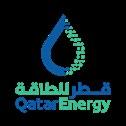
The order includes providing turbomachinery for a combined cycle power generation solution to be installed in the BM-C-33 FPSO aiming to reduce the project’s carbon footprint, as well as process design engineering and balance of plant.
On this occasion, Ganesh Ramaswamy, executive vice president of Industrial & Energy
Technology at Baker Hughes, said “This order is a testament of our established track record when it comes to technology for FPSO vessels. It also strengthens our relationship with MODEC and is a very important milestone in our collaboration with Equinor and its partners.”
QATARENERGY, CNPC TO CLOSE BIG LNG SUPPLY DEAL WITH CHINA
QatarEnergy and CNPC, Chinese statecontrolled company, are expected to sign a 27-year contract to allow Qatar to secure its second large gas supply with the Chinese company.
Sources in the report elaborated that CNPC will also purchase stock in Qatar’s North Field LNG project’s eastern expansion. The share is equal to 5% of one LNG train with an annual capacity of 8 million tons.
ENI
QatarEnergy has also signed equity partnerships on the project to international oil companies, but has said it plans to retain a 75% stake in the North Field expansion, which will cost at least $30 billion including construction of liquefaction export facilities.
ENI COMPLETES DELIVERY OF FIRST COMMERCIAL LNG CARGO TO PIOMBINO
Eni announced that it has delivered natural gas cargo to the SNAM regasification terminal in Piombino, Italy, the company said in a statement.

The cargo which amounts to 90 million cubic meters, was produced at the Sonatrach liquefaction plant in Betihoua, Algeria.
“Unloading operations took place following the completion of the test phase and mark the beginning of the terminal’s commercial operation,” Eni said.
This transaction affirms the necessity of natural gas as a reliable energy source and the capability to meet the growing energy
demand while supporting the energy transition, the company added.
SHELL SHELL TO PROVIDE MOROCCO WITH 500 MMCM/Y OF LNG FOR 12 YEARS
The Moroccan Energy Ministry announced that Shell company will supply the country with 500 million cubic meters per year (mmcm) of liquefied natural gas (LNG) according to a 12-year agreement.
The agreement was signed by electricity and water utility ONEE and Shell. Under the deal, the natural gas will be transported from Spanish ports initially, using a gas pipeline that links the two countries, until Morocco builds its own LNG terminals, Reuters added citing the Moroccan ministry
ONEE will use the LNG to operate two power stations in northern and eastern Morocco operated before by Algerian gas sent through the same pipeline.
TOTALENERGIES
TOTALENERGIES, SONATRACH SIGN AGREEMENTS TO ENHANCE NATURAL GAS COOPERATION
TotalEnergies announced that it has signed a series of agreements to boost the cooperation between the two companies in the production of natural gas, the delivery of liquefied natural gas (LNG) to Europe, and the development of renewables in Algeria.

The first agreement states that the two parties will convert the production contracts for the Tin Fouyé Tabankort II (TFTII) and Tin Fouyé Tabankort Sud (TFT sud) fields in southern Algeria (Sonatrach 51%, TotalEnergies 49%) to
MUBADALA
the framework established by the new Algerian Petroleum Law enacted on December 11, 2019. These are the first conversions of contracts in Algeria under the regime of the new Petroleum Law.


It will help in increasing the gas production of the two fields which are expected to produce more than 100,000 barrels of oil equivalent per day by 2026 (boe/d) versus a level of around 60,000 boe/d in 2022.The agreement is subject to the approval of the Algerian authorities.
MUBADALA ENERGY, PERTAMINA SIGN AGREEMENT ON ENERGY TRANSITION INITIATIVES
Mubadala Energy and Pertamina have signed an agreement to discuss, explore and potentially engage in energy transition initiatives, primarily focused on carbon capture, utilization and storage (CCUS) applications in Indonesia.
EGYPT
The agreement comes in line with Mubadala Energy’s commitment to energy transition goals. According to the deal, the two parties will conduct joint studies and, potentially, business development activities in this strategic area of carbon mitigation.

Under a second agreement, Sonatrach and TotalEnergies have extended their deliveries of 2 million tons per day of LNG to TotalEnergies until the year 2024. While the third agreement stated that TotalEnergies and Sonatrach have agreed to examine the development of projects to produce renewable energy in Algeria.
- PETROLEUM PRODUCTS & CRUDE OIL OVERVIEW
- NATURAL GAS IN DEPTH

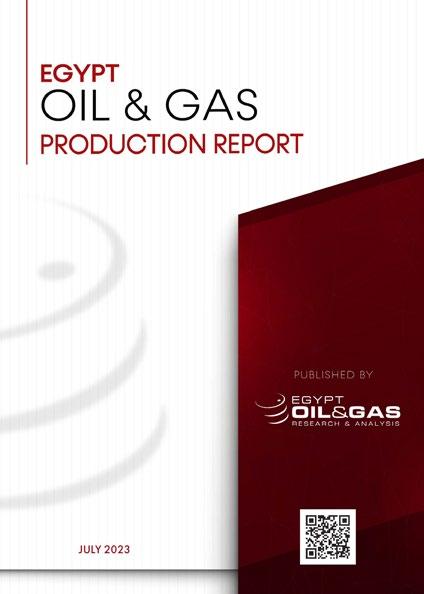
- CONDENSATES HIGHLIGHTS
- GOVERNMENT'S PLANS TO BOOST PETROLEUM PRODUCTION
Through the agreement, the two companies will provide a framework to explore CCUS solutions for Pertamina’s and Mubadala Energy’s existing portfolio of assets in Indonesia through collaborative discussions and evaluation of relevant projects.
OIL & GAS PRODUCTION REPORT
UNLOCK THE POTENTIAL OF EGYPT’S OIL AND GAS PRODUCTION & EVALUATE YEARS OF DEVELOPMENT
EGYPT’S PETROLEUM PORTS: A GATEWAY TO THE WORLD
BY JOLLY MONSEF, MARIAM AHMED & MAHA BALBAAEgypt is situated in a unique geographical location and has ports on the Red and Mediterranean Seas as well as the Suez Canal; the most important global navigational corridor. The development and modernization of Egypt’s ports will not only promote and enhance external trade and logistics services, but it will also contribute to commercial, industrial, and tourism development and have a positive effect on the national economy.
From their side, Egypt's relevant authorities, represented in the Ministry of Transportation, and the Ministry of Petroleum and Mineral Resources (MoPMR), are working on raising the efficiency of all petroleum ports and enhancing their capabilities. This is in addition to the ongoing development projects on ports to transform them into international-standard ones with the ability to attract the largest volume of global trade and investments. During the period from 2015 to 2021, the petroleum ports’ capacities were boosted by 85%, according to the MoPMR.
Flashbacks
Since its inception in 1974, Sumed has represented a link between the oil-producing Arab Gulf countries and the western refining centers through an efficient system for storing and transporting crude oil. This system is represented in petroleum ports in Ain Sokhna and Sidi Kerir. Ain Sokhna Terminal has 24 floating roof storage tanks with a total storage capacity of 2.9 million m3 while Sidi Kerir tank farm consists of 28 floating roof tanks with a total storage capacity of 3.1 million m3. During January 2002, Sidi Kerir received Mediterranean crudes for the first time and then was transformed into a discharging and reloading terminal, according to SUMED Website.

OVERVIEW OF THE MAIN PETROLEUM PORTS
Gulf of Zeit El-Zeit Bay area -
El-Zeit East Zeit Bay Port, the Red Sea Zeitco Co. – EGPC Receiving the loading and unloading of oil tankers About 80,000 bbl/y
Marsa El-Hamra Near Al-Alamein traffic station and west of Alexandria Wepco
Sadat Marina and Ras Hodeib Coast of the Gulf of Suez EGPC
Ras Sedr Southwest of Sidr City, east of the Gulf of Suez
Petroleum shipping 2 oil tankers/m, with 60,000 t load for each
Unloading the produced or imported crude to the dredging plants in the Suez and Mostorod regions
Maximum payload 60,000 t
1-2 oil tankers/m receive up to 11,000 t
Abu Redis The eastern shore of the Gulf of Suez Petrobel & EGPC -
Mersa Badran Belayim, the Gulf of Suez SUCO – EGPC
Receiving and stevedoring of oil tankers
Ras Shukeir The western coast of the Gulf of Suez GUPCU, EGPC & bp Petroleum shipping & marine petroleum services
Ras Ghareb The western shore of the Gulf of Suez GPC & EGPC
Petroleum loading/ unloading and marine petroleum services
*As published in the Maritime Transport Sector (MTS) Website, last review on July 26th, 2023.
4 oil tankers/m with 250,000 t load for each
About 12 mmbbl/y
About 225,000 t/m
DEVELOPING PETROLEUM PORTS
Under the presidential directives to turn Egypt into a regional oil and gas trading hub, the MoPMR put a plan to develop all the petroleum ports in 2016.
Petroleum Ports Development Projects
The development projects within Alexandria port, Al-Hamra port expansions, Sonker Bunkering company's project at Sokhna port, and Sidi Kerir port witnessed significant progress.
1. Alexandria Port
During February 2021, the MoPMR agreed with the Ministry of Transportation to improve the efficiency of petroleum facilities in Alexandria Port, responding to President El-Sisi’s directives to link sea and dry ports with logistics zones, most importantly the SukhnaAlexandria axis, passing through industrial zones, dry ports, and logistics zones, according to MoPMR press release.
In this context, PETROJET would implement five berths specialized in loading and unloading petroleum products as well as supplying cargoes. The project directly linked the logistics and goods distribution centers to the Alexandria Seaport through an integrated multimodal network to increase circulation in the port and to increase the spaces available for storage services.
Additionally, two logistics zones were agreed to be developed. The
2. Al-Hamra Port Expansions
Al-Hamra has become an alternative destination for the Russian oil exports in light of looming Western sanctions imposed on Moscow.
In July 2022, Russia shipped a cargo of about 700,000 barrels of oil to the Al-Hamra oil terminal, according to Bloomberg. After that the MoPMR has embarked on expansion works at the Al-Hamra petroleum port area in September 2022. The expansions cover an area of 120 acres to enhance the storage capacity of the port facilities. Accordingly, this will add four storage tanks with a capacity of 630,000 barrels of crude
Promoting the Specialized Petroleum Ports
The MoPMR implemented a work program to develop all specialized petroleum ports and enhance their efficiency while taking into account all environmental requirements. The most important developed ports are Sumed, Sonker in Ain Sokhna, Gouna Petroleum Basin in Alexandria port, MIDTAP Pier in Dekheila port, and Al-Hamra in El Alamein.
first logistics zone spans over 273 feddans at EGP 1 billion at the Metras Basin. The second one was developed over 12 feddans in Nagaa Aluminum over 31.9 thousand km2
As part of the national plan to develop the maritime sector in Egypt, the Ministry of Transportation established a multi-purpose maritime terminal in Alexandria “Tahya Misr” over the last two years. The terminal has been developed with a capacity for over 2 million tons (mmt) of goods a year, which is expected to boost the port’s annual revenues by $50 million, shorten waiting times for ships docking at the port, create investment opportunities, and provide 4,500 direct and indirect job opportunities. The cost of developing and renovating the port amounted to around EGP 60 billion whereas the establishment of the Tahya Misr multipurpose station cost EGP 9 billion.
oil each, to reach a total storage capacity of 5.3 million barrels (mmbbl) to facilitate trade flows and receive crude oil in the port of Al-Hamra, as stated in the MoPMR press release.
An additional 420-acre plot of land adjacent to the port will be used for the circulation and distribution of petroleum products and a shipping station to serve the expansions of the Al-Alamein area. These two new expansion areas add an area for the port up to 240% of its current area, according to the MoPMR press release.
3. Sonker Bunkering Company's Project at Sokhna Port
Sonker project aims at constructing and operating a bulk-liquids terminal for the import and storage of diesel and LPG, with an investment cost of $450 million. It was established on an area of 400,000 m2 , at the Port's third basin. Its first phase aims at storing and trading diesel and butane.
4. Sidi Kerir Port Upgrade Project
The project includes the construction of three ultra-cooled storage tanks, with a total capacity of 150,000 m3 to store LPG. It also includes the construction of three storage tanks with a total capacity of 100,000 m3 to store diesel, as well as the construction of two pumping stations for diesel and butane, according to the Egyptian Cabinet.
The MoPMR worked on upgrading Sidi Kerir Port to receive and handle gas oil for the first time, according to the MoPMR.Ports Capacities Expansion
The development projects that have been implemented had a remarkable impact on the capacities of petroleum ports as they expanded by 70% in FY 2021- September 2022 compared to FY 2014/15.
Fuelling Ships
The MoPMR has made great efforts to make Egypt a center for fuelling ships again. Two of the four licenses have already been handed over to Minerva Bunkering and Peninsula Ports international companies that started their activities in May 2023.
INTERNATIONAL COOPERATION TO DEVELOP THE EGYPTIAN PETROLEUM PORTS
Hutchison Ports announced on March 16 its investment project, which aims at establishing two new container terminals at Ain Sokhna Port and the Port of Alexandria in Egypt.
Sokhna Port's Project
The project targets developing a new strategic container terminal located on the Red Sea; it will feature modern technology and equipment to provide efficient and reliable services, according to the Hutchison Ports website.
Alexandria Port's Project
This project will develop B100, a new container terminal in the Port, to serve as a new gateway to Alexandria Port, which is one of the largest
2. Cooperation with Belgian Antwerp Port
In January 2022, the MoPMR held talks to enhance cooperation with Antwerp Port in the fields of petroleum port development, logistics
PROJECTS' INVESTMENT VALUE
$700 million
NEW TERMINAL
Capacity
1.7 million twenty-foot quivalent units (TEUs)
Boosting Egypt’s maritime trade
O ering Direct access to major shipping routes
ports in the Mediterranean and a key hub for trade between Europe, Asia, and Africa, according to Hutchison Ports website.
services, and capacity building in 12 petroleum ports at various governorates, according to the MoPMR.
The persistent development of the petroleum ports is considered an integral part of the MoPMR plans to turn Egypt into a regional energy storage and trading hub. Several future projects will be implemented to further expand petroleum seaports, raise its efficiency, and develop its capabilities as a logistical center. Those projects also pave the way for enhanced trade capacities and international investments, enabling Egypt to be a key player in the global maritime industry.
GREEN HYDROGEN STRATEGY: BOOSTING PRIVATE SECTOR CONTRIBUTION TO GREEN ENERGY
 BY SARAH SAMIR
BY SARAH SAMIR
The world is currently focused on reducing carbon emissions in generating energy and using it to face climate change. Accordingly, Egypt is keen to expand the production and usage of green hydrogen as a clean energy source. The country has been signing contracts and adapting several initiatives to promote Green Hydrogen and prepare for its Green Hydrogen Strategy.
Egypt has been working on boosting green hydrogen business. The country has signed several memoranda of understandings (MoUs) and contracts to produce green hydrogen.
In May 2023, Egyptian Minister of Finance Mohamed Maait revealed a green hydrogen production incentive ranging between 33% and 55% of tax dues. Moreover, in the same month, the Egyptian Cabinet granted approval to a draft law aimed at boosting green hydrogen projects and their related ventures. The draft law includes establishing green hydrogen plants, as well as desalination plants that assign a part of their output to green hydrogen. The law further includes renewable energy facilities that are dedicating at least 95% of their production to green hydrogen and desalination plants. Additionally, it covers projects set for the storage; transportation; and distribution of green hydrogen. It also included ventures manufacturing raw materials needed for the green hydrogen plants.
This comes as the European Bank for Reconstruction and Development (EBRD) is working closely with the European Union (EU) to support green hydrogen projects in the Suez Canal Economic Zone, as work is underway to launch a green hydrogen strategy in Egypt in cooperation with the Ministries of Electricity and Petroleum, Heike Harmgart, Executive Director of the Southern and Eastern Mediterranean Region at EBRD, told the Middle East News Agency in May.
In May 2023, Prime Minister Mostafa Madbouly witnessed the conference to launch the new country strategy between Egypt and the World Bank Group for the period 2023-2027.
Egypt adopted a new country strategy, through which the International Finance Corporation and the World Bank's Multilateral Investment Guarantee Agency are affiliated. The strategy is set to catalyze the role of the private sector and the availability of investments, development funds, technical support and consultations that enhance the competitiveness of the private sector in Egypt.
"The strategy will support Egypt's longterm aims and ambition by setting out the approach to build a thriving low carbon hydrogen sector," according to the EBRD website.
The country’s strategy comes is in line with the government's efforts to expand the base of private sector participation in development, and also includes the dimension of regional integration, especially in light of Egypt's presidency of the COP27 climate conference in 2022.
With the new strategy, Egypt is looking forward to boost its green hydrogen contribution. Accordingly, the country can move forward in its plans to reduce emissions and participate in climate action.
Green Hydrogen Incentives Green Hydrogen StrategyTHE STRATEGY IS SET TO CATALYZE THE ROLE OF THE PRIVATE SECTOR AND THE AVAILABILITY OF INVESTMENTS, DEVELOPMENT FUNDS, TECHNICAL SUPPORT AND CONSULTATIONS THAT ENHANCE THE COMPETITIVENESS OF THE PRIVATE SECTOR IN EGYPT.
THE COUNTRY HAS BEEN SIGNING CONTRACTS AND ADAPTING SEVERAL INITIATIVES TO PROMOTE GREEN HYDROGEN AND PREPARE FOR ITS GREEN HYDROGEN STRATEGY.
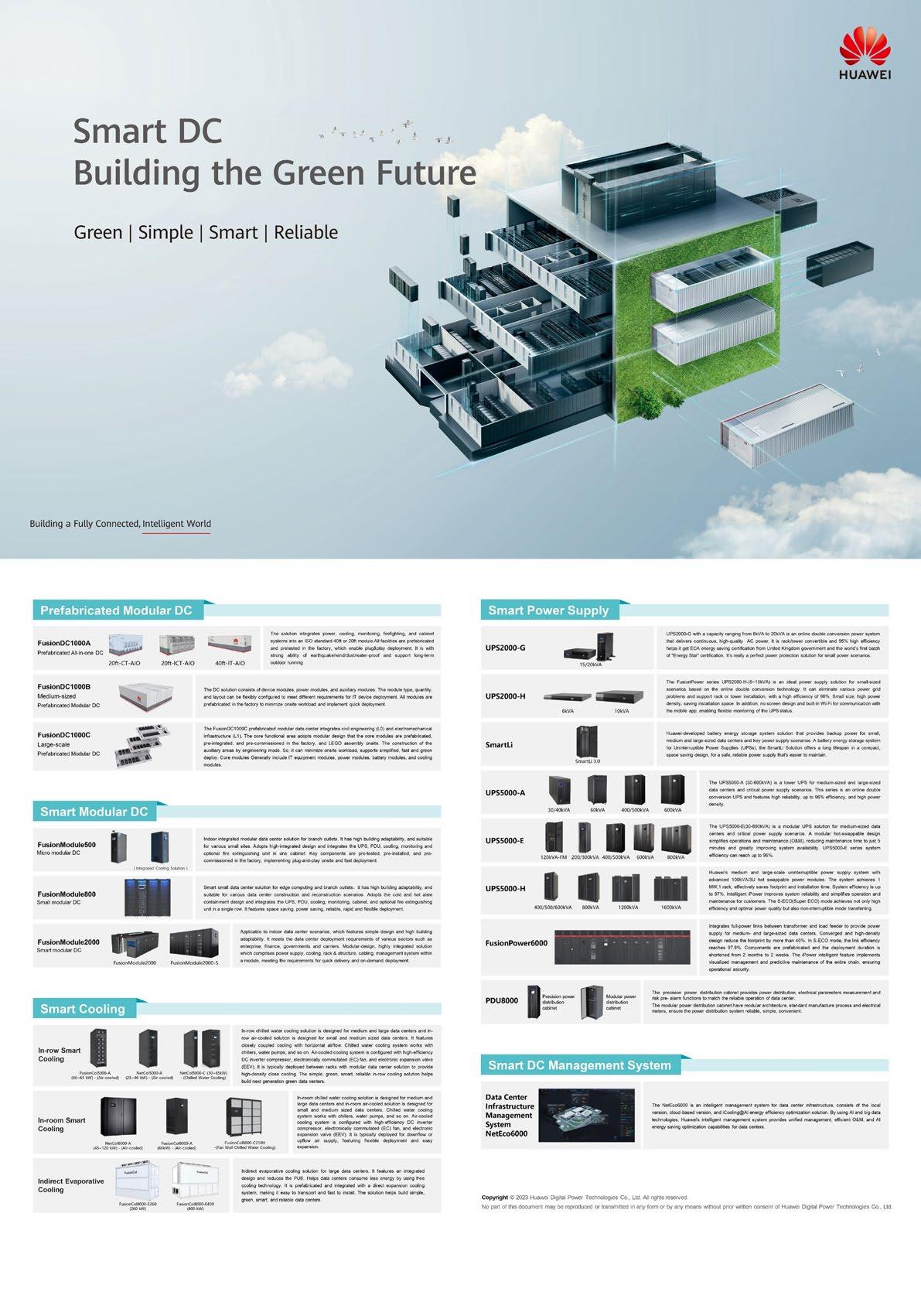
GREEN HYDROGEN: THE INTEGRATION IN THE OIL, GAS FIELD
BY RANA AL KADYThe heat is up and the pressure is on. Egypt's potential for growth as an essential hydrogen economy depends critically on its ability to create green hydrogen, which is generated utilizing renewable energy sources. Oil and gas firms have been compelled to decarbonize, which has led them to create technological expertise and approaches that may be useful in various sectors. These may be used by oil and gas businesses to provide decarbonization options, such as renewable energy production, commercial energy, batteries, and carbon capture, utilization, and storage (CCUS). Additionally, as the sector now depends upon fossil fuels and has a history of working with providers, those who represent it should be included in the process of creating the transition strategy.
The fact that it is widely acknowledged that using GH as a fuel instead of oil and gas would significantly help achieve the Paris Climate Agreement's objectives to minimize global warming is boosting its chances. Once utilized, green hydrogen emits only water, eliminating the harmful health effects and existential climatic repercussions of greenhouse gases, namely methane and carbon dioxide, released by the use of oil and gas in manufacturing, distribution, etc. Individuals in administration are beginning to realize that benefiting from such extensive decarbonization of economies and society is achievable.

General Overview
Leading global oil corporations are reorganizing their operations to include novel energy transition innovations, such as lowcarbon hydrogen, and becoming integrated energy suppliers. Leading integrated oil corporations have so far revealed plans to create approximately 2.9 million tons per year of low-carbon hydrogen as demand for the fuel grows.
The majority of the current hydrogen consumption is accounted for by the chemical and refinery industries. Lowcarbon hydrogen initiatives can support oil and gas firms' internal decarbonization endeavours. A Green Hydrogen Consultant stated that, “While it is true that [green hydrogen] is something worth investing in, it is difficult for the oil and gas field to make any progressions without good and valid incentives. The combination of incentives and having better and more infrastructure for these projects is the key to future successes.” Chemical firms will use hydrogen as a crucial fuel to create low-carbon ammonia and methanol, in addition to being used to create biofuels, which will lead to an increase in the need for hydrogen in the oil and gas industry.
Green Pressure
Since green hydrogen has the ability to substitute natural gas as a fuel for heating and can serve instead of diesel along with additional fuels, its growth is considered as essential to a green shift. Throughout the past year, a number of sizable green hydrogen initiatives have been launched worldwide with a significant hydrogen route slated for Egypt. Green hydrogen generation is currently more costly than other renewable energy sources. Nevertheless, is anticipated that production costs would decline dramatically as hydrogen activities spread globally, much like conventional renewable energy technologies such as wind and solar energy.
Even while there is still much to be done, the future seems promising. At the COP27 UN Climate Conference held in Sharm El-Sheikh, Egypt, there were a number of pledges to cut emissions including expansion in green hydrogen. The public and private sectors have agreed that hydrogen is a key component of a net-zero economy.
Challenges for Change
Since the majority of green hydrogen projects are still in the early stages, the cost of acquiring green hydrogen is currently still significantly greater than the price of fossil fuels. But if new initiatives are realized and economies of scale are created, a sharp decline in prices is anticipated over the following period, making it more economically viable than not environmentally friendly hydrogen. The creation of the facilities required for storing and delivering green hydrogen on a broad scale represents the second major obstacle to its widespread usage.
According to the International Energy Agency, oil and gas will continue to account for 46% of the world's energy supply in 2040. Net zero, however, does not indicate the abandonment of fossil fuels. It entails compensating for the emissions by constructing subsurface CO2 pipelines and contemporary transmission networks to transfer more environmentally friendly electrons.
Additionally, businesses may increase the amount of hydrogen they produce and spend money on carbon capture and storage, which benefits all areas of the economy. For instance, developments in low-emission hydrogen will pay off for the steel, cement, and fertiliser sectors. In conclusion, there is still more work to be done, but green hydrogen will not go away. In order to meet the Paris Agreement climate pledges and the necessary zeroemission goals for the climate crisis, increasing its usage is essential.
Leading global oil corporations are reorganizing their operations to include novel energy transition innovations, such as lowcarbon hydrogen, and becoming integrated energy suppliers.
NESR WATER IMPACT
Smart Circular Water Solutions
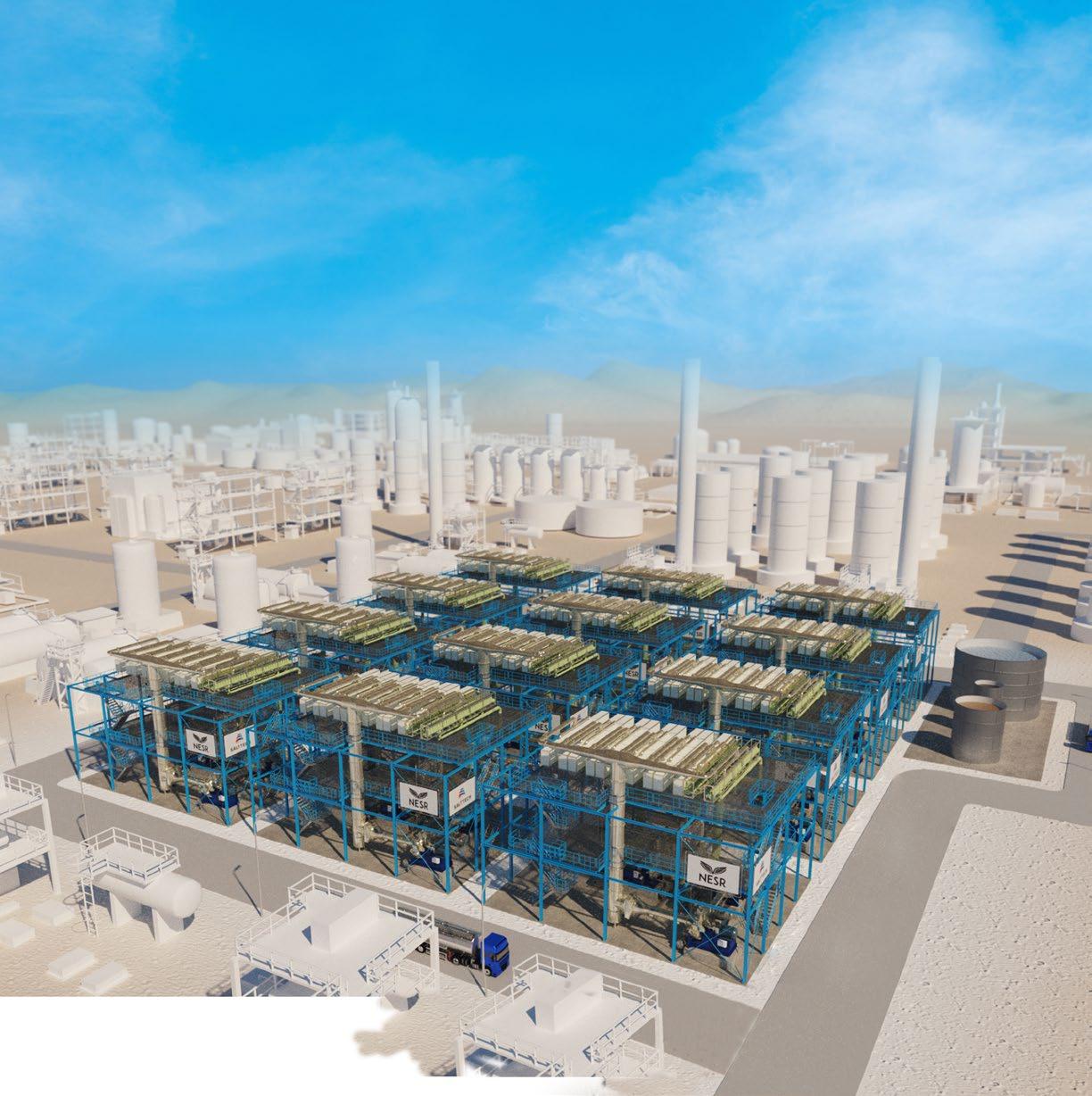
Accelerate the industry’s transition to cleaner energy through sustainable water stewardship.
DyVaR: zero liquid discharge (ZLD)

PLASMA TECHNOLOGY: A NOVEL AND SUSTAINABLE WAY TO PRODUCE HYDROGEN
BY FATMA AHMEDHydrogen is gaining more popularity as an elementary source of energy globally. However, most of the hydrogen produced from fossil fuels releases carbon emissions and contributes to climate change. With that, operators are seeking to produce hydrogen from clean sources such as water or biomass. As green hydrogen production requires a lot of energy and higher cost using the electrolysis process, which splits water into hydrogen and oxygen, plasma technology has recently emerged to improve the efficiency of green hydrogen production.
Spot Light on Plasma Technology
According to an article published by the Journal of Power and Energy Engineering, plasma is known as the fourth state of the material and can be defined as an ionized gas. It consists of a mixture of ions, electrons, and neutral particles. In green hydrogen production, it considered to have the best energetic efficiency. It is used in reforming fuels for hydrogen production. Plasma is classified into two types; thermal plasma and non-thermal plasma. The difference is based on the energy level. The article mentioned also that, the gas components’ temperature is the major difference between thermal and non-thermal plasma technology.
Thermal and Non-Thermal Plasma
Thermal Plasma consumes more energy than non-thermal one. It can be applied to the applications that need a high temperature such as vehicles ignition systems, lighting applications, gasification of solid fuels. A study entitled "Thermal-plasma-assisted renewable hydrogen and solid carbon production from ionic liquid-based biogas upgrading" reported that thermal plasma offers several benefits for the conversion of electrical energy to chemical energy, including flexible and controllable heating source with low-carbon emissions. It can be used in several applications, including Nano powders, destruction, and treatment of hazardous waste, metallurgy application surface modification and coating, chemical synthesis. It also can be used in waste treatment such as healthcare wastes.
Non-Thermal plasma consumes less energy as chemical reactions happens at low power and low temperature as well as low
capital and operating expenses. It is more suitable for producing syngas. According to the previously mentioned article, different reactors are being used for applying nonthermal plasma technology, including dielectric barrier discharge (DBD) reactors, gliding arc discharge, corona and microwave. The different types of the non-thermal plasma is determined by several parameters such as controlling method of the current and discharging power, reactor design, flow rate and the power supplies.
Positive Impacts
Plasma technology has many advantages that distinguish it from traditional technologies. Firstly, it is easy to install plasma reactors on the requested site due to its small size which reduces the costs of transportation and increases the efficiency. Also, it has the ability to produce hydrogen quickly. Additionally, plasma reactors allow the operators to produce hydrogen instantly on demand, so there is no need for storage systems. Moreover, as mentioned previously, plasma technology enables control over the chemical processes that occurs during hydrogen synthesis, increasing efficiency and reducing waste.
Remarkable Applications
There are various applications for the plasma technology in producing green hydrogen. One of the promising applications is the use of plasma electrolysers. An Australian startup called Hydrogen Systems Australia has developed these electrolysers using plasma, as the fourth state of matter, to reduce the cost of green hydrogen by a factor of three. This technology works "by using electrical power inside a plasma chamber at certain frequencies that elicit favorable
responses from the hydrogen and oxygen atoms in water, requiring much less power than standard PEM or alkaline electrolysers," an article issued by Recharge news, stated.
Another application of plasma technology in green hydrogen production is the use of plasmalysis technology. This technology is developed by two companies: Graforce and Worley. It can transform liquefied natural gas (LNG), flare gas, and other hydrocarbons into hydrogen without releasing CO2 or other harmful greenhouse gases. It helps in transition into clean-burning hydrogen without requiring switch energy suppliers or transition methods, according to an article published by Offshore Technology.
Furthermore, Graforce has developed a plasma electrolysis process to produce hydrogen from residual materials in an energy-efficient and cost-effective manner. The company's technology "does not split water molecules to produce hydrogen, but instead splits nitrogen and hydrocarbon compounds found in wastewater or other feedstock," the company said.
In conclusion, plasma technology offers many benefits for green hydrogen production, including increased efficiency, reduced costs, and greater versatility. It is an exciting development in the field of clean energy and has the potential to play a significant role in the transition to a sustainable future.
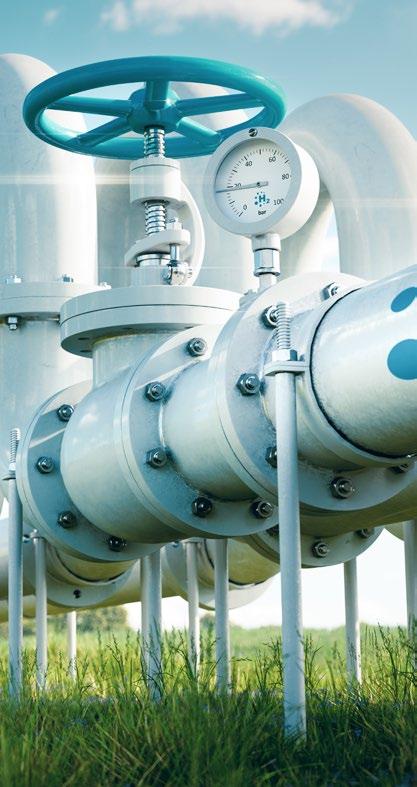

GLOBAL HYDROGEN PRODUCTION: FUTURE-PROOFING THE ENERGY ECONOMY OF TOMORROW
BY NADER RAMADANWith global emissions becoming an increasing concern, natural gas is perceived as being only part of the solution for a decarbonized future. For many, future-proofing the global energy economy really relies on creating a diverse energy mix, one in which hydrogen makes the answer that humanity is looking for.

From an economic perspective, hydrogen offers markets many lucrative opportunities. For the first time, markets are no longer required to have the advantage of having large amounts of oil and gas reservoirs in order to be energy-rich. All countries now have the opportunity to become net producers eventually if they adopt the right technologies, and hydrogen has made this all possible. But the question still lies in its economic feasibility, a complex issue that has had many experts doing extensive research into this promising new energy alternative.
Before examining the future of hydrogen, it is first necessary to track the progress of hydrogen in its current state. A study from PricewaterhouseCoopers titled “The Green Hydrogen Economy: Predicting the Decarbonisation Agenda of Tomorrow” summarizes the current state of the hydrogen economy as follows: “Right now, almost all hydrogen produced worldwide is ‘grey’ which means it is produced from natural gas. Without a price on carbon emissions, grey hydrogen is inexpensive (€1 to €2 per kilogram), but it compounds the challenge of improving environmental sustainability. Green hydrogen, in contrast, uses renewable electricity to power electrolysis that splits water molecules into hydrogen and oxygen. Because green hydrogen doesn’t require fossil fuels, it is a better long-term solution to help decarbonize economies. Yet green hydrogen—currently costing €3 to €8/kg in some regions—is more expensive than grey.”
In other words, the feasibility and growth of a healthy hydrogen market currently depend on maintaining a robust natural gas market. Green hydrogen would need to witness even more technological development in order for the production process to be less costly and emissions-intensive. For hydrogen to be economically feasible in the nearfuture, especially in the developing world,
natural gas is an essential prerequisite that can nourish the birth of a new prosperous hydrogen economy.
In assessing economic feasibility, costefficiency is yet another factor that is not to be underestimated. High costs of production could prove as a significant hindrance to growth especially in the context of competitiveness in the global economy. Nonetheless, most studies reveal that hydrogen production looks like it has a promising outlook with the advancement of technologies and the discovery of more efficient, innovative production methods, especially in many of the major markets. According to the same study from PricewaterhouseCoopers, hydrogen production costs are projected to decline by an estimated 50% through 2030, followed by an additional gradual decline that will last until 2050. The same study projected that by 2050, green hydrogen production costs will be within the range of €1 per kg to €1.5 per kg in a number of regions, including the Middle East, Africa, Russia, China, the US, and Australia.
The study also indicated that, in terms of demand, hydrogen has a promising future moving forward with projections from the same study suggesting that it could vary from 150 to 500 million metric tonnes per year based on the trends of global climate action in addition to other key factors, such as sector activities, the exploitation of carbon-capture technologies, etc.
It is worth noting that growth in hydrogen demand will be limited by a number of factors, as emphasized by the study. As a trend in the market, hydrogen is still in its early stages of really becoming a fundamental part of the market. The study said “… current hydrogen projects under construction and in operation are,
despite growing capacities, almost exclusively at precommercial phase and have limited electrolyser capacities, typically well below 50MW. Proposed plants have larger electrolyser capacities of 100MW or more, but those are still small compared to current grey hydrogen production plants.”
The lack of adequate infrastructure and its building cost will also prove to be a temporary hindrance to hydrogen growth. Economies that are seeking to decarbonize will need to focus their efforts on quickly finalizing all the necessary infrastructural projects in order for the hydrogen market to really take off.
“…. building the infrastructure for large scale hydrogen use, such as pipelines or export/ import terminals, will take many years—it takes seven to twelve years to plan and build a pipeline, for example. Ideally, the required infrastructure will be built in parallel to growing hydrogen demand at falling costs to ensure that by 2030 hydrogen can be traded and transported in necessary quantities,” the study said. “All medium and high ambition scenarios see a stronger hydrogen demand from 2030 and another strong increase from 2035 onwards.”
The inevitability of hydrogen becoming a significant part of the energy industry is both increasingly self-evident and critical for sustaining an adequate level of economic growth while reducing harmful emissions. Hydrogen is not only economically feasible to be a new fuel that will power up Egypt’s future, but it will also be a main attraction for investments from all over the world. This is all due to the Egyptian Ministry of Petroleum and Mineral Resources’ tireless efforts to promote green hydrogen as a catalyst for Egypt’s vision to become a regional energy hub. Though the growth of hydrogen is limited by costs, technological development, and the lack of sufficient infrastructure to sustain the desired production capacity, the economic feasibility in the long run is beyond doubt and Egypt is already ahead of the curve.


PETROLEUM SECTOR CONTRACTS: TYPES, CHARACTERISTICS & CONTENT
By Eng. Mohamed Abdelraouf - Production Gen Mgr in Khalda Petroleum CompanyOil is a valuable national asset that cannot be underestimated or left without a specific and clear legal framework, as it is no secret to anyone that it could have positive impacts on the economic and social arenas. It is the main income for producing countries, and there is no other equivalent for their national economy. The majority of oil-producing countries depend on it at a rate ranging between 95% and 98%
In extractive industries, the contracts define the relationship between the state and the companies operating in this sector, in addition to the rights and duties of each party. It highlights plans for exploration, extraction and production, financial conditions, consequences of waiving the exercise of the petroleum right, methods of keeping records and accounting...etc.
There are three types of these contracts in this sector, which are concession contracts, production sharing, and service sharing contracts. Each type of contract has characteristics that distinguish it from other types of contracts.
The government grants concessions to a company or companies to work in a specific sector, such as oil exploration in a specific geographical area.
The rights to the natural resources belong to the concessionary trading company(s). These companies fund all exploration, development and production operations.
Usually, in this type of contract, the state’s profits consist of a specific percentage of royalties and taxes, in addition to social taxes and bonuses. If the state participates through its national companies, the company's share of the profit oil is added to its profit.
2. Production Sharing Contract
Ownership of natural resources belongs to the state. Companies have the exclusive right to exploration, development and production.
In this type of contract, companies bear the cost of exploration, development and production, and recover their investments later from the oil they extract and export. Then, companies share the profit oil with the state according to a previously agreed upon formula.
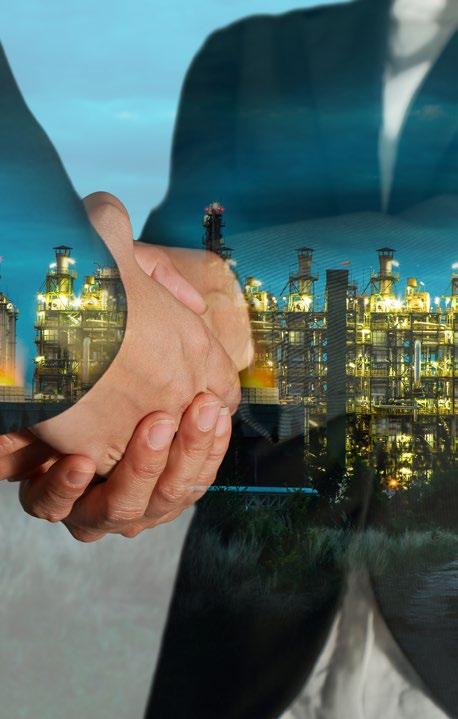
The state's profits in general consist of its share of the profit oil, royalties and taxes.
This type of contract is common in the oil sector and is rare in the gas sector and is not applied in the mining sector.
3. Services Contract
Natural resources are under state ownership. It concludes an agreement with companies to provide specific technical services, such as exploration work, construction work, transportation...etc.
The state keeps the resources it produces and pays companies for their services, either in cash or a commodity, such as oil or other types of commodities.
These types of contracts are rare and are adopted by countries, such as Saudi Arabia, Kuwait and Iran.
• Each contract includes axes in which the duties and rights of each of the companies and the state are refuted, namely: technical, commercial, social, environmental, production and obligations.
Technical Hub:
The technical axis revolves around the exploration plan, the geological systems for petroleum proposed by the right holder, the potential reservoirs, their depth and number... etc. This includes the companies' obligations and the time, geological and practical plans for extracting oil from sea or land.
Commercial Hub:
This axis highlights and defines the method of calculating the profits of the rights holders and the state from oil production.
Social Hub:
This axis highlights the obligations of the rights holders towards the community in terms of employment, training, financial assistance, and financing for activities beneficial to the host community.
Environmental Axis:
This axis highlights the laws, rules and requirements that rights holders must respect and implement to protect the environment and public safety.
"Establishing a proactive culture of commitment to health, safety and environmental values among all workers involved in petroleum activities."
Production and Commitments:
There are obligations and minimum work requirements that the right holder must abide by, such as carrying out geophysical surveys, geological surveys, aerial surveys...etc.
The right holder must also drill at least one exploratory well.
If production issues and obligations center on broad lines and rules, the right holder must apply them.
• The legal nature that governs the contractual relationship between the oil-producing countries, that is, the owners of natural wealth, is one of the issues that affect national sovereignty in the first place. We saw how this relationship developed and went through many stages.
With the beginning of the oil discoveries, specifically after the Second World War, the investing companies had absolute privilege. Oil-producing countries were on the simple side of knowledge, follow-up and validity. But as we reached beyond the year 1952, the picture changed and the sovereign and independent countries began to demand from foreign investors for direct support, the expansion of contracts and granting countries more power over what is essentially a public domain.
The United Nations intervened, intentionally or unintentionally, towards the issuance of Resolution No. (545 of 1952), related to the right of peoples to selfdetermination. It should be noted that self-determination in all aspects related to the state is the same, whether from an economic or social point of view, due to the interdependence of the two elements towards achieving the public benefit that accrues good for the citizens of all peoples.
These countries sought independence to achieve the signs of economic self-sufficiency, and they largely achieved this goal, each in the manner that is deemed appropriate with the general policy of the state and its laws in force.
It is not acceptable to think that the oil-producing countries have become completely isolated from Western investors, but they are, to a large extent, dealing with them as equals. We see them seeking national cadres, administrative control, and equal financial profits to a reasonable extent. The best example is what is happening now in Kuwait in terms of discussions with foreign companies that are trying to conclude contracts similar to the old ones, but the Kuwaiti National Assembly is striving towards achieving the greatest economic gains in this field. This is in addition to many countries that proceeded and achieved many deals that are considered new to investing companies.
1. Concession Contract
THE ROAD TO ZERO EMISSION SHIPPING
BY IHAB SHAARAWYAmid accelerating climate change consequences, member countries of the International Maritime Organization (IMO) adopted a revised greenhouse gas (GHG) strategy for shipping that sets a net zero emissions target by around 2050.

The revised IMO GHG Strategy also includes a commitment to ensure the uptake of alternative zero and near-zero GHG fuels by 2030, as well as indicative checkpoints for 2030 and 2040.
The previous (IMO) target, which was set following the 2015 Paris Agreement, sought to cut emissions by 50% by 2050. However, this target was widely criticized as not aligning with the Paris Agreement’s goal of limiting global heating to 1.5°C.
The IMO Secretary-General Kitack Lim described the adoption of the 2023 IMO Greenhouse Gas Strategy as a monumental development for IMO that opens a new chapter towards maritime decarbonization.
As environmental groups still insist the strategy is not ambitious enough and lacks the binding mechanisms or levies that guarantee to achieve such a target, shipping industry officials hailed the new strategy, indicating that the agreement gave them concrete targets to work with. The new strategy has also raised debate on the role the hydrogenbased zero-emission fuels such as green hydrogen, green ammonia, and green methanol, can play in the decarbonization of the Shipping industry.
Zero-Emission Shipping
The shipping industry plays a crucial role in the global economy as it facilitates the movement of goods and commodities across the globe. It is responsible for transporting about 90% of world trade, making it an essential component of international trade and commerce. It also forms a vital link in the global supply chain, ensuring the efficient movement of goods from manufacturers to consumers. Hence, it generates substantial economic impact, providing employment opportunities, generating revenue through freight charges, and contributing to the GDP of many countries.
However, this essential industry also plays a significant role in global emissions as it is responsible for around 2-3% of global CO2 emissions, making it a significant contributor to climate change. While the percentage may seem comparatively lower, in absolute terms, shipping emissions are substantial due to the vast volumes of goods transported worldwide and the expected continuous growth in this sector.
Ships primarily rely on fossil fuels, particularly heavy fuel oil and marine diesel, which are high in carbon content. The sheer size and power requirements of ships result in large quantities of fuel being burned, leading to substantial CO2 emissions. Ships are also known for using high-sulfur heavy fuel oil, resulting in significant sulfur oxide (SOx) emissions. These emissions also contribute to air pollution and associated health issues.
Ships usually operate in international waters, making them challenging to regulate and monitor. The absence of a comprehensive international framework, until recently, has allowed the shipping industry's emissions to increase considerably.
The industry, with the support of the IMO, has introduced regulations for better fuel efficiency, stricter sulfur limits, and adopting cleaner technologies. Furthermore, industry players are exploring alternative fuels, such as LNG and biofuels, and implementing energysaving measures like slow steaming and improved vessel design.
However, achieving the net zero goal for shipping seems to hinge on hydrogen.
Hydrogen Paves the Way for Zeroemission Shipping
Green hydrogen, green ammonia, and green methanol are widely debated as the perfect fuel for a future net-zero shipping industry. Green methanol and ammonia have higher energy densities and are relatively easier to transport and store on ships, they have become the most promising near-zeroemission marine fuel for the next decade. However, in the long run, hydrogen can be a more advantageous zero-emission solution, and it poses the least potential threat to the environment when it leaks.
Green hydrogen is produced using renewable energy sources, such as wind or solar power. By using these renewable sources, the production process is free from greenhouse gas emissions, unlike conventional hydrogen production methods. This ensures that the entire value chain, from hydrogen production to utilization in shipping, remains emissionsfree.
It also boasts a high energy density per unit of weight, making it an attractive option for the shipping industry. This allows for a higher energy storage capacity on board, facilitating long-distance travel without sacrificing cargo-carrying capabilities.
There is a growing belief that the growing demand for green hydrogen will spur the development of necessary infrastructure, including hydrogen production plants, storage facilities, and refueling stations. This infrastructure will play a critical role in supporting the adoption of green hydrogen in shipping.
At the same time, governments and international organizations are increasingly recognizing the importance of decarbonizing the shipping sector by implementing regulations and incentives to encourage the use of zero-emission fuels like green hydrogen, further driving its potential.
However, some challenges need to be addressed, such as the cost of green hydrogen production, infrastructure scalability, and ensuring safety in handling and storage. Overcoming these challenges will be crucial to fully realize the potential of green hydrogen in achieving zero emissions shipping.
Only A Beginning
The IMO Secretary-General Kitack Lim said the unanimous support from all 175 member states was "particularly meaningful" and that the deal opened "a new chapter towards maritime decarbonization". However, he admits that “it is not the end goal, it is in many ways a starting point for the work that needs to intensify even more over the years and decades ahead of us.”
As climate events are increasing in intensity and impact, transitioning different industrial sectors, including shipping, to zero-emission fuels, notably green hydrogen, needs to happen as rapidly as possible and will require both financial and strategic support from governments, the private sector, and international organizations.
Green hydrogen, green ammonia, and green methanol are widely debated as the perfect fuel for a future net-zero shipping industry.
A CUP OF SEA: EGYPT’S WATER DESALINATION JOURNEY
There is no doubt about how essential water is to life, society, and the well-being of any country. Seawater is also one of the most especially important non-traditional water resources in light of climate change, the nation’s population explosion, and expanding economic activities. With the immobility of Egypt’s share of the Nile water, which amounts to 55.5 billion cubic meters per year and the decrease in the per capita share of water to 600 cubic meters annually, this is the battle that Egypt is waging to achieve comprehensive and sustainable development in line with Egypt's Vision 2030. This is especially essential since the global per capita rate is 1000 cubic meters per year.
Producing one meter in water desalination plants needs up to 15,000 Egyptian pounds in investments , and the cost of establishing one desalination plant is equal to four times the cost of establishment of a regular water purification plant. Desalination plants inside Egypt are used for drinking only, and not for agriculture, so the aim of establishing water desalination plants is to rationalize the consumption of the Nile River water and to provide Nile water for use in agriculture.
The immobility of Egypt's share of water for decades, considering the continuous increase in water needs resulting from population growth, is a matter of great urgency and requires an immediate search for new mechanisms to benefit from seawater. This is especially since agriculture consumes about 80% of Egypt's share of water and 10% is directed only from the river water for drinking purposes. Another 10% of water is used for commercial purposes and other activities. Egypt aims to produce 1 billion cubic meters of desalinated water until 2037, which is sufficient for the needs of its growing population during this period.
The desalination plant construction should mainly have the following systems, including the seawater intake system, pretreatment system, seawater desalination RO system, energy recovery system, chemical dosing system, CleanIn-Place (CIP) system, and Programmable Logic Controller (PLC) system.
Egypt is working on implementing many new projects to develop and operate projects for water desalination, sewage treatment, and recycling of agricultural drainage - in support of the state's policy for rational water management with the possibility of using alternative and renewable energy in these projects to reduce the environmental footprint and the cost of consumed energy.
Water scarcity may be the greatest threat to humanity today and the biggest obstacle to economic development in the future, which requires that countries around the world unite and focus their efforts on achieving water security. This can be realized through allocating the required resources to accomplish this goal and strengthening collective action at the level of states, institutions, and international non-governmental organizations in the areas of water sustainability, especially in the water desalination industry.
Mohamed Atia Process Engineer at Egyptian Refining Company (ERC)VARIABLE SPEED DRIVES: AN ESSENTIAL TECHNOLOGY FOR THE ENERGY SECTOR’S FUTURE
Variable speed drives (VSDs) are electronic devices commonly used in commercial and industrial settings to improve energy efficiency and enhance process control. They control the speed of an electric motor by adjusting the frequency of the electrical power supplied to the motor.
The efficiency of a VSD is determined by how effectively it converts the electrical power supplied to it into mechanical power delivered to the motor. Several factors can influence the efficiency of a VSD system. Firstly, the design and components of the VSD itself play a crucial role. High-quality VSDs from reputable manufacturers offer better efficiency and reliability than lower-quality alternatives.
The type of motor being controlled also affects VSD efficiency. Different motor types have varying efficiency characteristics, and the VSD must be compatible with the specific motor. Additionally, the operating conditions of the system and the control strategy used can impact efficiency. Optimization of the control strategy and adjusting its settings to match the motor and load conditions can improve power factor and efficiency.
The power factor is an important consideration for VSD efficiency. A low power factor can lead to increased energy consumption, higher costs, and potential power quality issues. Power factor correction capacitors can be employed to reduce reactive power consumption and enhance system efficiency.
Another factor to address is harmonics. VSDs generate harmonics due to their high-frequency switching and pulse-width modulation. These harmonics can interfere with other equipment in the electrical system and reduce overall system efficiency. Filters and other mitigation measures can be implemented to minimize the impact of harmonics.
Operating temperature is critical for VSD and motor efficiency. High temperatures can diminish the efficiency and lifespan of electronic components as well as motor insulation materials, resulting in decreased performance and potential failures. Proper cooling systems, such as air-cooling or liquid cooling, must be in place to maintain optimal temperature levels and prevent overheating.
System design and layout are also crucial factors in VSD efficiency. Poor system design, such as long cable runs or insufficient voltage supply, can lead to voltage drop and reduced system efficiency. Furthermore, the quality of VSD components and the manufacturing process can affect efficiency and reliability. It is advisable to choose high-quality VSDs to ensure optimal performance and longevity.
When evaluating VSD systems, the overall cost-effectiveness should be considered. While high-quality VSDs may have a higher upfront cost, they often provide significant energy savings and reduced maintenance costs over the system's lifespan.
In conclusion, maximizing the efficiency and reliability of a VSD system involves selecting high-quality VSDs, properly sizing and installing the VSD and motor system, conducting regular maintenance and cleaning, considering the overall costeffectiveness, and ensuring proper cooling systems and mitigation measures are in place. By considering these factors, industries and commercial enterprises can optimize their energy usage, reduce costs, and improve process control.
Chemist Wael Essam El Rayes CEO Deputy Ass -General Petroleum CompanyVALUE AND VOLUME OF SHARES TRADED FOR ENERGY & SUPPORT SERVICES SECTOR IN JUNE 2023
PERFORMANCE OF PETROLEUM COMPANIES IN THE EGYPTIAN EXCHANGE IN JUNE 2023
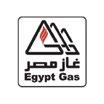



Source of Raw Data: CBE CAPMAS Egyptian Exchange PMI by S&P Global


*From June 27th to July 3rd was a Public Holiday

LINKING THE RAVEN FIELD TO THE WESTERN DESERT NATURAL GAS COMPLEX: 1ST PHASE*


AGREEMENT TO DEVELOP PHASE 10 AT WDDM CONCESSION*
SIGNING
Achieve exceptional drilling performance with an advanced, integrated BHA
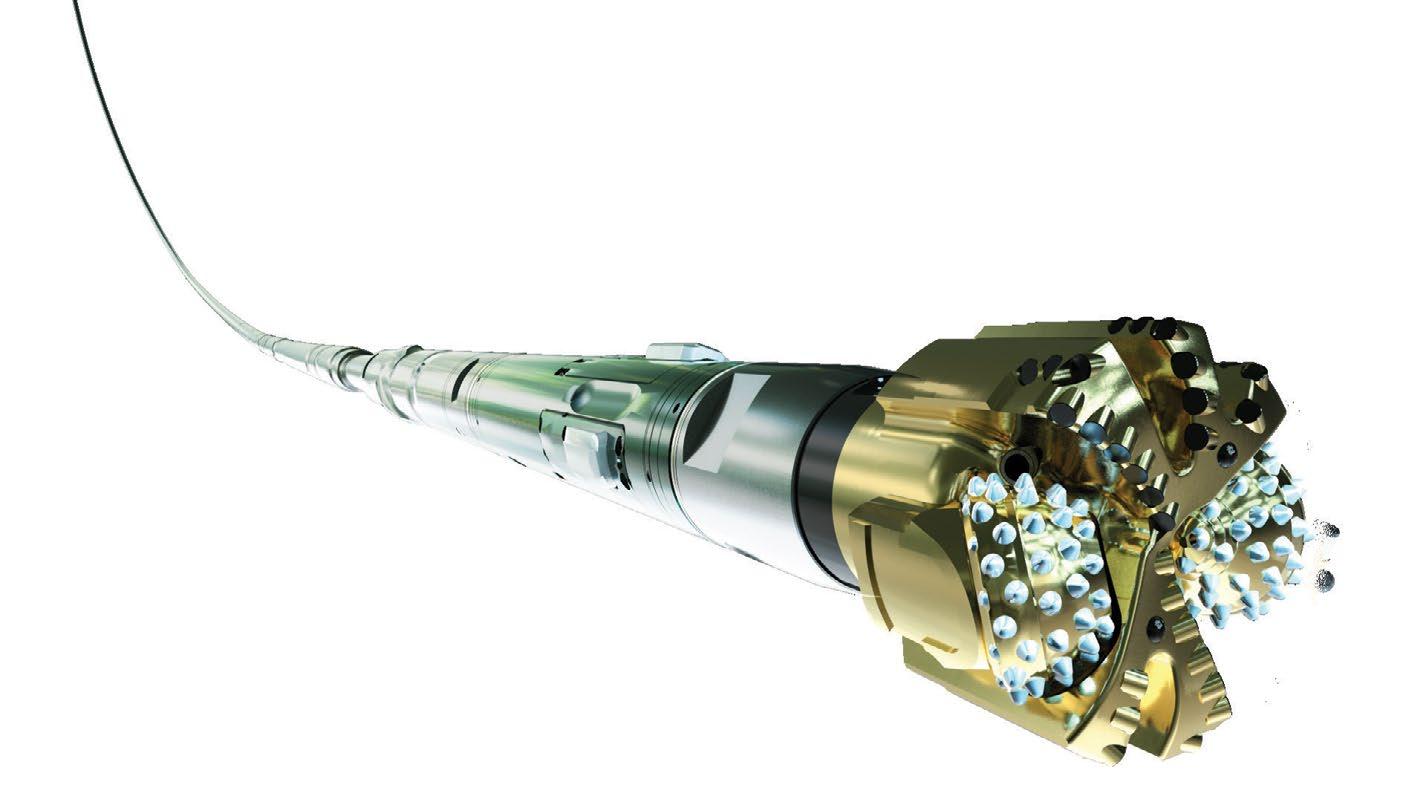
• Eliminates days of rig time to deliver significant savings
• Delivers superior hole quality to eliminate reaming runs
• Drills longer laterals with greater speed
• Accomplishes exact well placement with near-bit azimuthal gamma-ray measurements
• Attains superior wellbore quality with automated wellpath trajectory control
Lucida™
Advanced rotary steerable service
CASE STUDY: DELAWARE BASIN, UNITED STATES
Baker Hughes delivered superior wellbore quality and faster penetration rates
17% improvement in drilling efficiency
39% reduction in average dogleg saved
2.7 days reduction in drilling time
TECHNOLOGIES AND SERVICES
62% saved in drilling costs
$160K reduction in maximum dogleg
• LucidaTM advanced rotary steerable service
• DynamusTM extended-life drill bit

